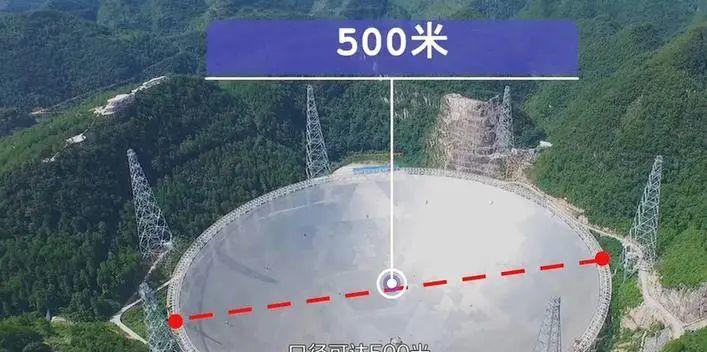In a depression, it can capture extremely weak signals from distant galaxies. How is this done?
This is the superiority of the mainland's 500-meter aperture spherical radio telescope, the "Chinese Sky Eye" (FAST)!
It is the world's largest single-aperture radio telescope, as far as the eye can see, that is, "beyond the light years"; "power" is powerful, insight into the deep and dark universe.
The mountain silhouette is the eyelid, the circle beam is the orbit, the reflection panel is the eyeball, the feed chamber is the pupil - look at it from a high altitude, the silver giant "eye", the weather is extraordinary: its caliber is 500 meters, equivalent to the receiving area of 30 football fields, and the light reflection panel has 4450 pieces; in addition to the large, proud, it is the most sensitive radio telescope in the world.
As we all know, astronomy is a science that relies heavily on observational equipment. There is no observation equipment, only theoretical research can be carried out or research based on other people's data.
It's good now! After 22 years, with the "Chinese Heavenly Eye" built by Nan Rendong, the "Father of Heavenly Eye", "our position in the field of international astronomy is different... In the field of radio astronomy, we have entered the first team. Wu Xiangping, academician of the Chinese Academy of Sciences and director of the FAST Science Committee, said.

Gravitational theory, galaxy evolution, and even the origin of matter and life, unlocking these mysteries of the universe that have plagued mankind for a long time, what role can the "Chinese Heavenly Eye" play?
Take a look at its transcript!
In the two years since the official acceptance, about 500 pulsars have been discovered, becoming the most efficient device in the world. "We are confident that we will find 1,000 pulsars." Han Jinlin, chief researcher of the National Astronomical Observatory, said that as the remnants of massive stars after death, pulsars have long been a frontier field of astronomical and physical research, and their discovery and research is one of the key scientific targets of the international large radio telescope. "China's Sky Eye" has become the world's most powerful pulsar search weapon!
The annual observation time exceeds 5300 hours, which has far exceeded the work efficiency expected by international peers; the high-level papers published based on observational data have reached more than 120... Among them, the research results of fast radio bursts (the brightest radio burst phenomenon in the universe) were published in the international scientific journal Nature, making the relevant scientific research teams in the mainland quickly become the core research force of international fast radio bursts. On January 6, the journal Nature published in the form of a cover article the "Chinese Celestial Eye" neutral hydrogen spectral line to measure the interstellar magnetic field, and human beings have taken another step forward in solving the mystery of star birth.
In accordance with scientific objectives and related strategic planning, "China Sky Eye" has also established a number of priorities and major projects, including multi-scientific target drift scanning survey, neutral hydrogen galaxy survey, Galactic polarization survey, pulsar timing, fast radio storm observation, etc.
Scientific and technological innovation is inseparable from international cooperation and open sharing.
At the beginning of its construction, the "China Heavenly Eye" established the principle of gradual opening up in accordance with international practice. Since the opening of observation applications to global scientists on March 31, 2021, "China Sky Eye" has received a total of 7216 observation applications from all over the world, and finally, 27 international projects in 14 countries (excluding China) have been approved and launched in August 2021.
The good news continues – "China Sky Eye" is considering setting aside 1% of its observation time to open up to primary and secondary school students across the country. "Primary and secondary school students can come up with good scientific ideas and professional astronomers can help them realize them." Wu Xiangping said.
With insight into the universe, all mankind will gain a broader vision with the help of the "Chinese Heavenly Eye".
(Reporter Zhan Yuan)
Source: Guangming Daily (2022.01.25 01 edition)
Video/Image: Guangming Network
Editor-in-charge: Wang Zimo
Editor: Zhang Yongqun Wang Yuanfang